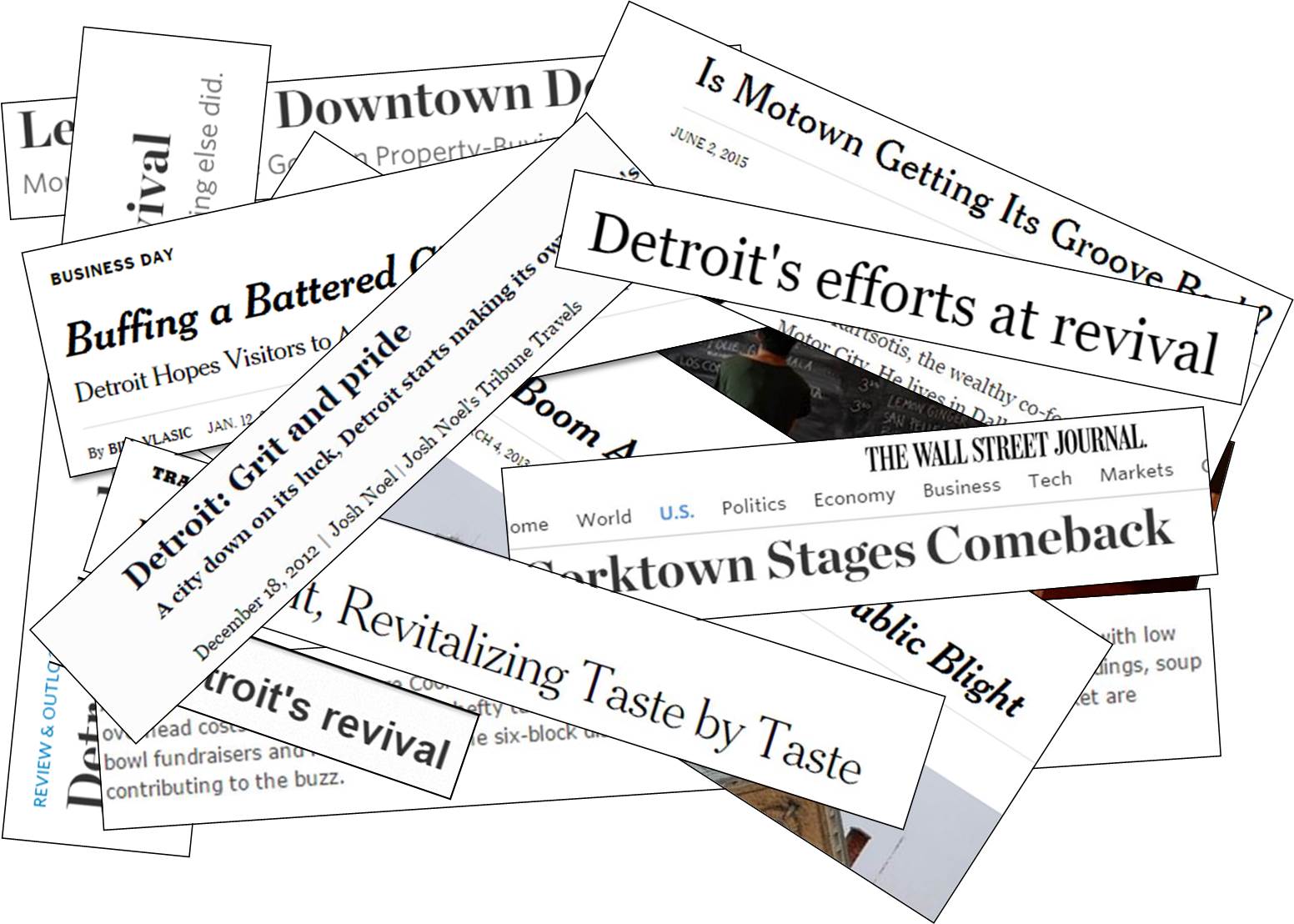The past few weeks, I’ve been spending some of my time at work looking at how the media portrays Detroit’s revitalization and why that matters. According to the most recent census, 64 percent of Detroit’s businesses are Black-owned, but many residents are concerned that media narratives from both national and local sources surrounding Detroit’s resurgence mostly focus on a few trendy, White-owned businesses. The New York Times was even forced to address problems with a 2014 travel article about Detroit’s Corktown neighborhood after it was criticized for featuring only white business owners and patrons.
By parsing Proquest’s newspaper database offered through the UofM library by using the Python splinter and phantomjs modules, and using a listing of popular small Black-owned businesses on the organization Us Too Detroit’s Facebook page, I was able to draw some basic data about national media coverage in the city.
In total the nearly 100 Black-businesses in US Too’s listing where mentioned 5 times in the six national papers. By comparison, two White owned-businesses alone, Kartsotis’s Shinola and Phil Cooley’s Slow’s Barbecue, were mentioned in 17 articles over the same period.
The way these businesses are written about when they are included also differs. Nine of the pieces that mention Slow’s or Shinola include them in the title or article summary, while only one of Us Too’s minority businesses received as much attention when mentioned. Slow’s and Shinola are much more likely to be written about as “Detroit saviors”, whereas Us Too’s Black-businesses are included in five pieces simply highlighting many different events and businesses. (One development leader I talked to even jokingly referred to the Slow’s and Shinola as Barbecue Jesus and the Leather Goods Messiah because of this trend.)
And this trend isn’t just limited to this one small set of businesses, or the African American community. There were 64 New York Times articles from January 2013 to June 2015 that include both the word “Detroit” in the title, abstract, or location and some form of the words “revival” or “revitalization”in the article body. These articles mentioned 25 unique private for-profit firms doing business in Detroit. Of the organizations mentioned only two were black-owned, Thrift on the Avenue and Textures by Nefertiti, both mentioned in one article about university-area policing. Just one was hispanic-owned, Fernando Palazuelo’s Arte Express, the company working to revitalize the Packard Plant. The other 22 were White-owned firms. This in a city that is 82 percent Black and nearly 7 percent Hispanic.
These gaps between reality and media coverage are hugely important for the future of equitable and inclusive development in the city.
Part of the city’s attractiveness is what local art museum George N’Namdi calls its Motown Soul – its distinctive culture and diversity that has made and continues to make it unique. By covering only White business owners in one part of the city, the media simply jumbles Detroit into the parade of gentrifying cities and their newly upscale neighborhoods. It fails to highlight the unique culture that makes it an attractive place to live and work.
Moreover, many residents have pointed to media narratives that center on White faces moving into greater-Downtown as a leading cause of the feeling that they no longer have a place or voice in their own city. In this way, unbalanced narratives can unfairly exclude long-time residents from development conversations.
It is true that articles that focus on attractive new businesses is better for Detroit than the endless stream of “ruin porn” the often characterizes national coverage of the city. But there is more in Detroit than just blight and a few trendy businesses.
Detroit’s small Black-businesses have always been, and continue to be, the creative and cultural life-blood of the city. By including coverage of these firms, both new and old, national and local media can paint a more truthful and diverse picture of the city. This will help foster a more inclusive and equitable Detroit revitalization.



